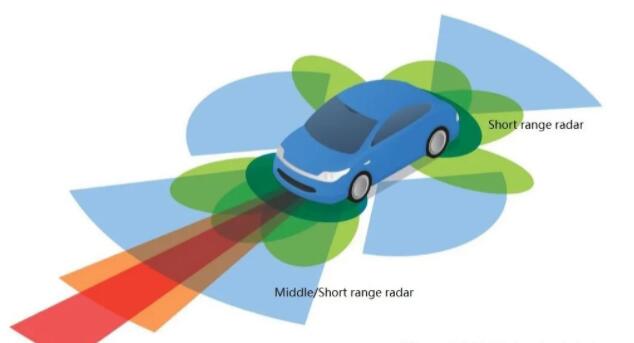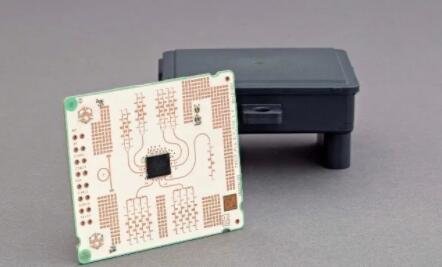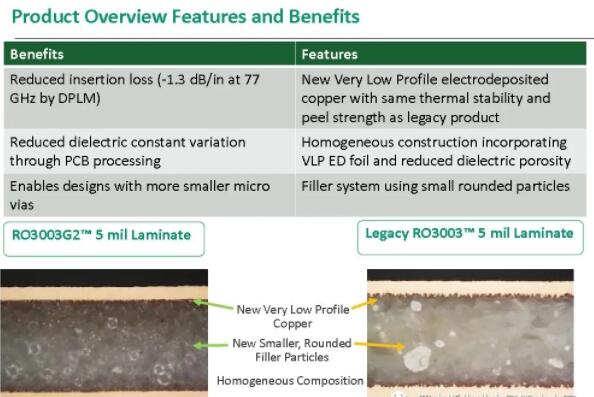Auto-driving vehicle and Advanced Driving Assistance System (ADAS) technology promote the rapid development of millimeter-wave radar sensors and the iteration update of technology for automobiles, and also make driving and travel safer. Millimeter-wave radar has become an indispensable sensor in automotive driving and ADAS system because of its high resolution, strong anti-jamming performance, good detection performance and small size. With the increasing possibility of millimeter-wave radar design in China and the mounting of domestic car models, the application of millimeter-wave radar has been extended to more areas. This article will briefly describe some application scenarios and design trends of millimeter wave radar. The selection of key PCB materials in the design of millimeter wave radar antenna and the key characteristics of PCB materials are discussed.
77GHzmm-wave radar PCB Application Scenarios
With the development of technology, millimeter-wave radar has developed in the direction of meeting the needs of users, realizing the detection range from near to far, and improving the measurement accuracy gradually. From the earliest speed and distance measurement, to the realization of speed, distance and angle measurement, to now the realization of higher resolution image imaging. In ADAS system, the application of millimeter wave radar can be divided into forward radar, backward radar and angle radar according to the different requirements and functions of the vehicle. It can also be divided into long-range radar, medium-range radar and short-range radar according to the distance of detection. The application of millimeter wave radar in ADAS includes AEB auto brake, FCW forward collision warning, LCA channel assistant, ACC adaptive cruise, BSW blind zone monitoring, etc.

Design Trend of Automotive Millimeter Wave Radar and PCB Material Solution
In addition to assisting the driving and driving safety of cars, the application of automotive millimeter wave radar has also expanded to the application of obstacle detection when parking or opening doors, reducing door collision damage when parking or driving.
Various other applications have increased the diversity of millimeter-wave radar applications and actively expanded the new scene for millimeter-wave radar applications. If the driver's vital signs monitoring radar sensor is used, the driver's vital signs, such as heart rate and respiratory rate, can be monitored in a non-contact way, so as to sense the driver's fatigue state and achieve the goal of safe driving. Passenger member monitoring radar sensor also achieves reliable detection of passengers (adults, children, pets) in the car in a non-contact way, avoiding the occurrence of accidental detention events in the travel process, and providing safe travel guarantee for consumers.
Design Trends
The main operating frequencies of Automobile Millimeter wave radar are 24GHz and 77GHz. The 24GHz band is mainly used for short range radar, and the detection distance is about 50m. It can be used for blind spot detection and other systems. However, due to its narrow bandwidth, the resolution and performance of the radar are greatly limited.
In contrast, 77 GHz radar has broad prospects. Its great advantages are high accuracy, high resolution, and excellent measurability from short to long distances. The two bands of 77 GHz radar are 76-77 GHz and 77-81 GHz, with bandwidth of 1 GHz and 4 GHz, respectively. The huge bandwidth advantage significantly improves the resolution and accuracy. On the other hand, because of its high frequency and short wavelength, the 77GHz radar has smaller components such as the designed radar transmitter or antenna, which reduces the size of the radar and makes it easy to install and hide in the body. The 77GHz band has gained significant traction in global regulation and industry adoption.
The application of 77GHzmm-wave radar corresponds to the advanced stage of automotive automation. With the development of automobile driving and the improvement of ADAS installation rate, most 24 GHz automotive radar sensors will turn to 77 GHz band, and their requirements and applications will gradually increase.

Design Trend of Automotive Millimeter Wave Radar and PCB Material Solution
The 77GHzmm-wave radar system module is based on the design of FMCW radar. Most of them use complete single-chip solutions such as TI, Infineon or NXP. The RF front-end, signal processing unit and control unit are integrated in the chip, providing multiple signal transmission and reception channels. The PCB board design of the radar module varies depending on the customer's antenna design, but there are several main ways.
The first kind uses PCB material with ultra-low loss as the carrier plate for the top antenna design. The antenna design usually uses a patch antenna, and the second layer of the stack is the stratum of the antenna and its feeder. Other laminated PCB materials are FR-4. This design is relatively simple, easy to process and low cost. However, due to the thinner thickness of ultra-low loss PCB materials (usually 0.127mm), attention needs to be paid to the effect of copper foil roughness on loss and consistency. At the same time, the narrow feeder of the microstrip patch antenna needs to pay attention to the accuracy control of the processing line width.
The second design method uses the dielectric integrated waveguide (SIW) circuit to design the antenna of the radar, which is no longer a patch antenna. In addition to antennas, other PCB stacks use FR-4 materials as radar control and power layers as in the first way. PCB materials used in this SIW antenna design still use PCB materials with ultra-low loss to reduce loss and increase antenna radiation. Thickness selection of materials usually results in wider bandwidth with thicker PCBs and less roughness of copper foil. There are no other problems when processing narrower linewidth. However, the hole processing and positional accuracy of SIW need to be considered.
The third design method is to design the laminated structure of multilayer plates with ultra-low loss materials. Depending on the requirements, it is possible to use ultra-low loss materials for several of the layers, or to use ultra-low loss materials for all the layers. This design method greatly increases the flexibility of circuit design, increases the degree of integration, and further reduces the size of the radar module. But the disadvantage is that the relative cost is high and the processing process is relatively complex.
Design Trend of Automotive Millimeter Wave Radar and PCB Material Solution
Material considerations
For different PCB designs of millimeter-wave radar sensors, a common feature is that ultra-low loss PCB material is needed to reduce circuit loss and increase antenna radiation. PCB material is the key component in the design of radar sensor. Selecting the appropriate PCB material can ensure the stability and consistency of the millimeter wave radar sensor.
Design Trend of Automotive Millimeter Wave Radar and PCB Material Solution
Figure 4. Microstrip antenna of automotive radar sensor
The performance of PCB materials for 77GHzmm-wave radar needs to be considered from these aspects:
First, the electrical characteristics of the material, which is the primary factor in designing the radar sensor and selecting the PCB material. Selecting PCB materials with stable dielectric constant and ultra low loss is essential for the performance of 77GHzmm-wave radar. The stable dielectric constant and loss can make the antenna receive and receive accurate phase, which can improve the antenna gain, scan angle or range, and improve the accuracy of radar detection and positioning. The stability of dielectric constant and loss property of PCB not only ensures the stability of different batches of materials, but also ensures that the variation within the same plate is small and has very good stability.
The surface roughness of the copper foil used in PCB material affects the dielectric constant and loss of the circuit. The thinner the material, the greater the surface roughness of the copper foil has on the circuit. The coarser the copper foil type, the greater the roughness change of itself, will also result in greater changes in dielectric constant and loss, and affect the phase characteristics of the circuit.
Secondly, the reliability of the material needs to be considered. The reliability of materials not only refers to the high reliability of materials in PCB processing, affected by the processing process, through holes, copper foil binding force, etc., but also includes the long-term reliability of materials. Whether the electrical performance of PCB material remains stable over time and under different working conditions, such as different temperatures or humidities, is of great importance to the reliability of automotive radar sensors and the application of automotive ADAS systems.
In general, for the antenna design of 77GHz radar sensor, it is necessary to consider selecting materials with stable dielectric constant and ultra-low loss. Smoother copper foil can further reduce circuit loss and dielectric constant tolerance change. At the same time, materials should have reliable electrical and mechanical properties with time, temperature, humidity and other external working environment.

PCB Material selection
Rogers has been working with the world's top radar module manufacturers since the early days of the automotive millimeter wave radar development to launch RO3003 without glass cloth The material's performance has been rigorously verified in all aspects and can meet the needs of 77 GHz radar sensor. RO3003 The material is widely used in 77GHz millimeter-wave radar, and has very stable dielectric constant and ultra-low loss characteristic (the loss factor is 0.001 under conventional test at 10GHz). At the same time, the structure without glass cloth further reduces the local dielectric constant change in millimeter band, eliminates the glass fiber effect of the signal, and further increases the phase stability of the radar sensor. RO3003 The material also has ultra-low water absorptivity (0.04% @D48/50), very low dielectric constant (TCDk) stability (-3ppm/?C), which also ensures RO3003-based performance. Material millimeter-wave radar sensors can still maintain excellent performance over time, temperature and environment. The choice of various types of copper foil and the choice of low copper thickness provided by the product also help to improve the processing accuracy and product yield, and enable the radar sensor to achieve better performance.
With the development of 79GHz band (77-81GHz) radar sensor, it has wider signal bandwidth, which can further improve the resolution of the radar sensor, increase the scanning angle, and even realize 4D imaging. Rogers is based on RO3003 On the basis of materials, RO3003G2 is developed and launched Material to match the higher performance requirements of radar sensors for PCB materials. Compared to RO3003 Material, RO3003G2 The special filling system is optimized in the material system, which reduces the filling particles, improves the uniformity of the material system, and further reduces the dielectric constant tolerance between the whole plate and batch properties. Smaller and uniform filling systems also allow smaller through hole designs during PCB processing. RO3003G2 Smoother copper foil is selected to reduce the insertion loss in the circuit and its performance is very close to RO3003 Insertion loss performance of calendered copper of the material.